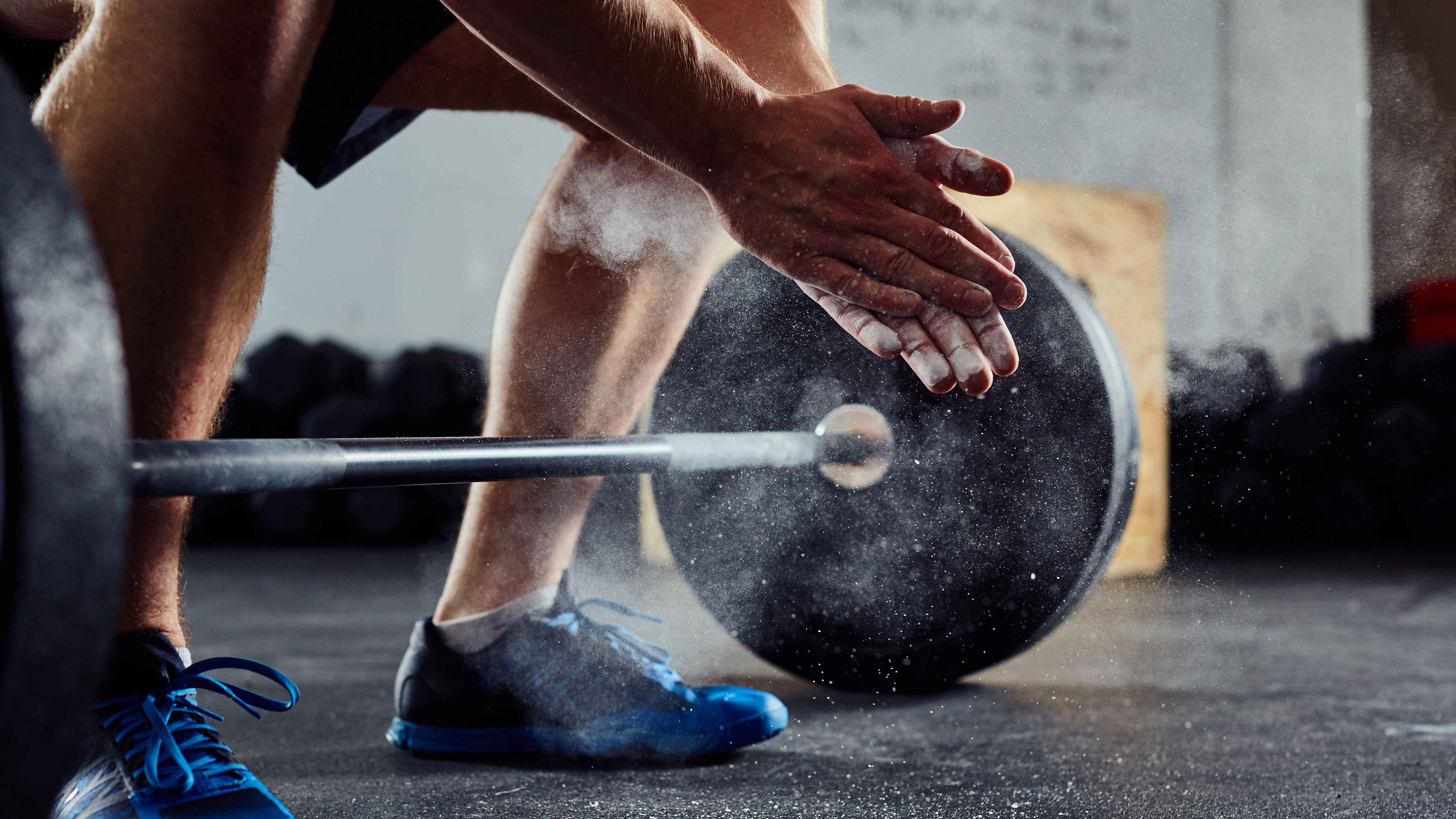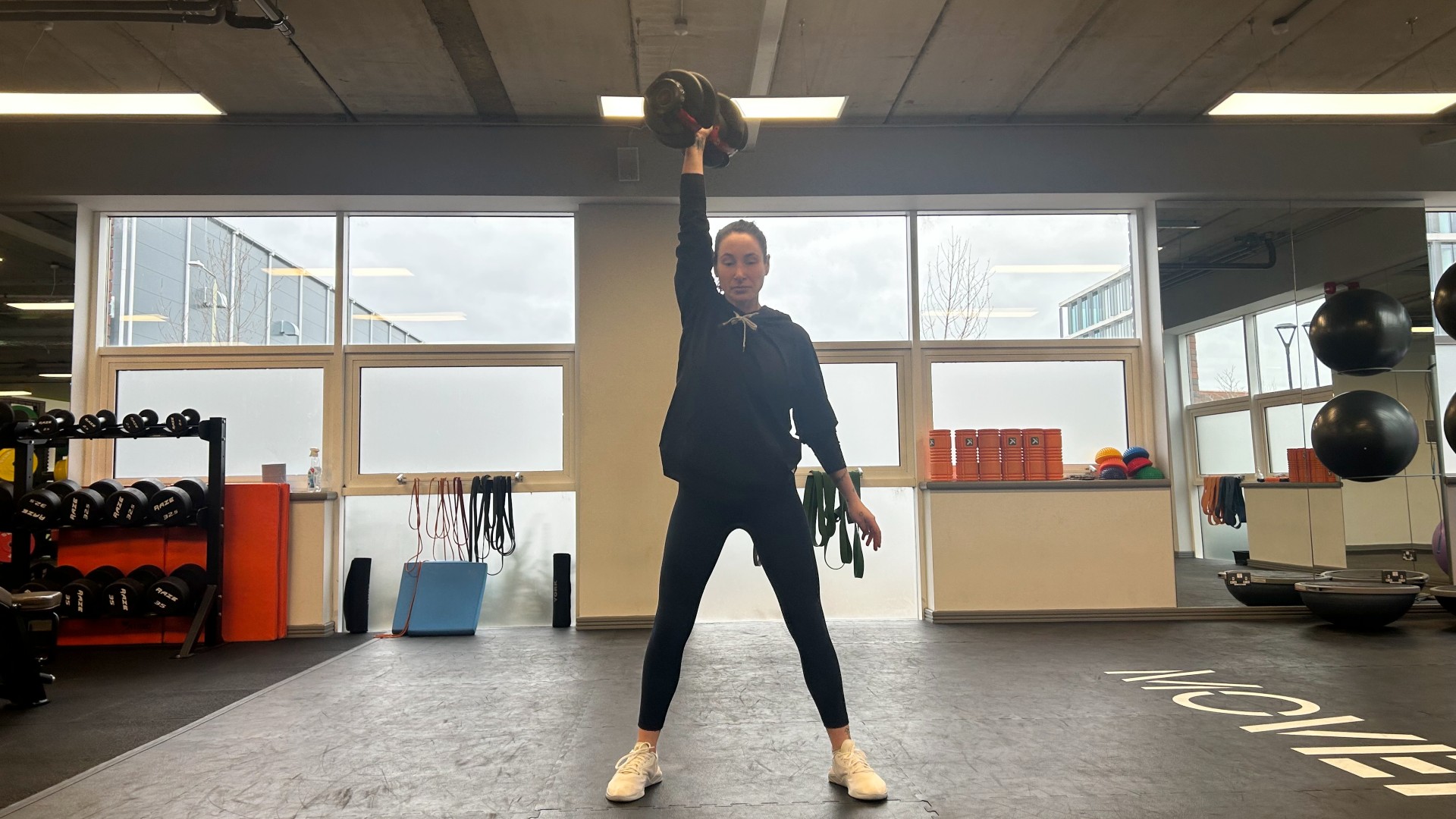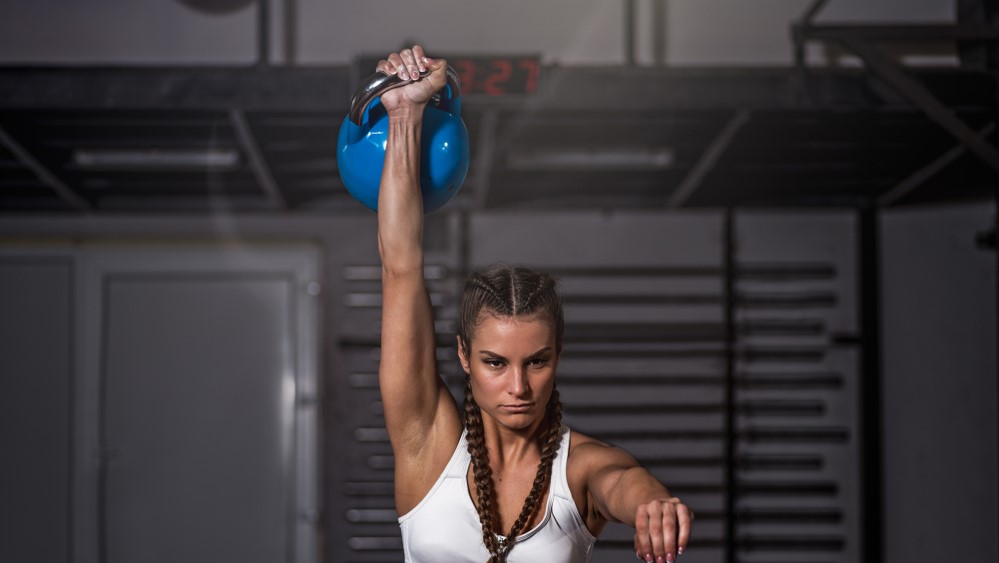
For any snatch novice, learning how to execute the move properly from the ground up will hugely help you maximize the benefits.
If you persevere with leveling up your snatch skills before bad habits set in, it’s much easier to master. Of course, you'll still need to spend years refining your technique.
Alongside advanced weightlifting exercises like the clean and press, jerk, or split jerk, the snatch nudges its way up the list of moves to master if you plan on exercising in classes like CrossFit or Olympic lifting. But what is it?
The snatch is a floor-to-overhead move that requires plenty of snappy power. It basically involves gripping a weight on the floor, then driving said weight above your head in an explosive pulling motion. But of course, it’s not as simple as that — unfortunately. To safely wield a heavy weight overhead, it takes skill to control it. Below, we cover how to snatch, the benefits, and snatch variations using kettlebells, the best adjustable dumbbells, or barbells.
Benefits of the snatch

If you nail your snatch technique, you could build a powerhouse body of strength, power, and muscle and develop core and shoulder stability and coordination. Not only will snatches help you advance in weightlifting, but the move works multiple muscle groups, including your chest, back, arms, shoulders, legs, and glute muscles.
Good technique will translate elsewhere, improving exercises like the overhead squat, overhead press strength, and (for the CrossFitters amongst you) handstands.
Your core muscles engage throughout the snatch, especially to stabilize your torso, while your legs, shoulders, and arms will help drive the weight overhead into the catch position. To push up underneath the weight in order to stand, your legs, chest, and shoulder muscles engage. Driving any weight up this fast will help your body learn to coordinate, balance, and develop power.
Sign up to get the BEST of Tom's Guide direct to your inbox.
Get instant access to breaking news, the hottest reviews, great deals and helpful tips.
Any exercise that requires speed and power will recruit fast-twitch muscle fibers — the same ones active during exercise like sprinting. These fibers fatigue quicker, but training them will help develop a better mind-body connection, power output, speed, and more efficient neuromuscular pathways. Used in classes alongside conditioning, you’ll stimulate muscle growth and burn a load of calories.
How to barbell snatch: technique and grip
Here's how.
Set-up
- Stand with feet hip-width or shoulder-width apart and the barbell over the widest parts of your feet
- Bend down and grip the barbell with a wide overhand grip — this is called a snatch grip
- Keep weight distributed evenly throughout your feet
- Engage your core, glutes, and shoulders, and set your shoulders back and down
- Send your hips down and lean slightly forward so that your shoulders are over the bar while keeping your back flat
Knees
- Push through your feet, lift your chest, and begin to lift the bar to mid-shin height, keeping the bar close to your shins
- Shoulders will be over the bar
- Begin to stand, now driving the barbell towards your hips with close contact between thighs and bar
- Extend your legs, snap your hips forward, and draw your shoulders back. The barbell should contact your hips without bouncing off them
Drive and catch
- Slightly shrug your shoulders towards your ears and softly bend your elbows
- Begin to pull the barbell upwards overhead, the bar in close contact with your body
- Fully extend legs and hips
- Pull yourself under the bar, ready to catch it in an overhead squat position
Catch and stand
- Straighten both arms and press underneath the bar
- Engage as many muscles as possible to keep your body stable as you lockout the overhead position and catch in the overhead squat in one fluid motion
- Keeping the body tight, drive up to stand with the barbell overhead.
The barbell snatch is perhaps the most technical snatch variation to master, especially as you can pack on the most weight using a bar. The skill lies in transferring the weight from the lower to the upper body and catching under the bar with stability before you press upward.
The two snatch variations below use free weights. Free weights allow you to work single-sided, which is great news for building strength and balance and addressing muscle imbalances. It could also benefit beginners learning the move, especially as Olympic bars at the gym often start at a weighty 15kg.
Two snatch variations to try
How to kettlebell snatch: technique and grip
- Start with the kettlebell on the floor between your feet, feet hip-width apart
- Push your hips back, keeping a flat back, and lower your left arm down
- Grip the kettlebell handle with the left hand, swing the kettlebell behind you, between your legs (like a kettlebell swing)
- As you stand, extend your hips, straighten your knees, shrug your left shoulder, and swing the kettlebell upwards, driving your arm up overhead
- Keep your core engaged throughout
- As the kettlebell drives overhead, swing it over your hand to catch the back of your hand
- Lock the left arm out at the top
- With control, flip the kettlebell back to the front and lower the arm
Avoid banging the weight against your wrist — this one’s all in the wrists. Find out what happened when our writer did 100 kettlebell snatches a day, and learn how to hold a kettlebell properly using various grip techniques here.

How to dumbbell snatch: technique and grip
- Start with the dumbbell between your feet, which should be hip-width apart
- Grip the weight overhand with one hand, lift your chest, and send your bum downward
- Engage your core, keep your spine neutral
- Drive up through your feet and begin pulling the dumbbell upwards, lifting hips and shoulders together
- Keep the dumbbell close to your body and bend the elbow as you pull the weight, snapping the hips into extension in a standing position
- Shrug the shoulders as you send the weight up and pull yourself under the weight
- Catch in an overhead squat position, knees bent, squeezing your muscles tight, and locking your arm out at the top
- Stand, keeping your muscles tight and dumbbell overhead.
Hang snatch vs power snatch vs muscle snatch
You might have seen terms like "hang snatch," "power snatch," "muscle snatch," and "hang power snatch" used.
During a power snatch, you'll receive the bar in a partial squat, otherwise you'll catch in a deep overhead squat. During muscle snatches, you'll catch the bar with straight legs. "Hang" refers to your starting position. If it's a hang snatch, you'll start with the bar hanging down rather than on the floor.
Phew, that's a lot of snatches.
More from Tom's Guide

Sam Hopes is a level 3 qualified trainer, level 2 reiki practitioner and senior fitness writer at Tom's Guide. She is also currently undertaking her Yoga For Athletes training course. Sam has written for various fitness brands and websites over the years and has experience across brands at Future such as Live Science, Fit&Well, Coach, and T3.
Having worked with fitness studios like F45 and Virgin Active, Sam now primarily teaches outdoor bootcamps, bodyweight, calisthenics and kettlebells. She also coaches mobility and stretching-focused classes several times a week and believes that true strength comes from a holistic approach to training your body.
Sam has completed two mixed doubles Hyrox competitions in London and the Netherlands and finished her first doubles attempt in 1:11.
